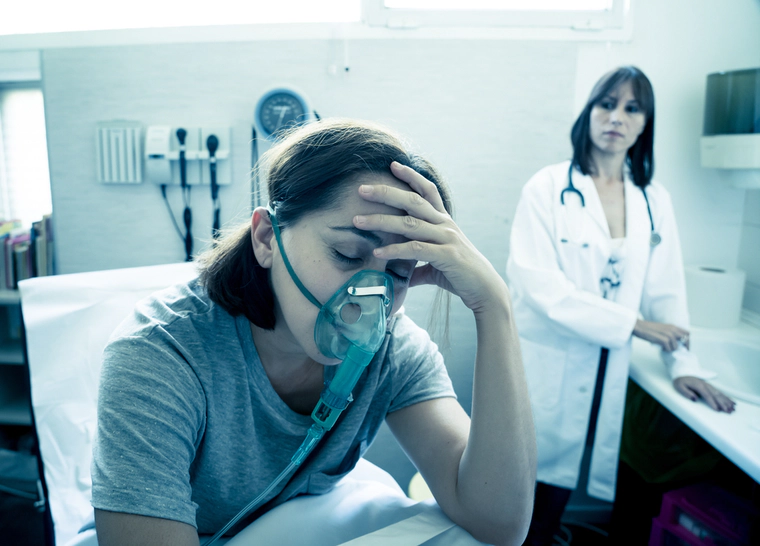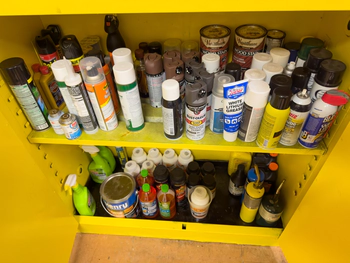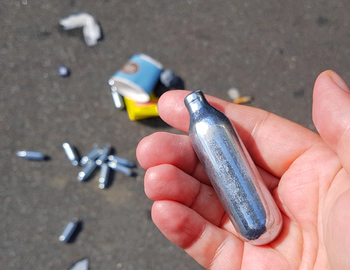What is the Scope of Inhalant Use Today?
Inhalant use has been in practice by the nation’s youth for years, with some reports suggesting millions of teens experiment with such substances at least once each year.

Most people do not consider cans of paint, aerosols, nail polish, thinners, propane, or butane to be “drugs.” However, such substances can produce mind-altering effects when inhaled, an increasingly popular trend among young people.
Inhalants Defined

Inhalants produce chemical vapors that, when inhaled, can create mind-altering effects. Inhalants themselves are not “drugs” per se. They usually fall into four categories: solvents (paint thinner, felt-tip markers, nail polish remover), aerosols (paint, deodorant, hair spray, fabric protector), gases (ether, chloroform, nitrous oxide), and nitrites (cyclohexyl nitrite, amyl nitrite, butyl nitrite). From laughing gas to keyboard cleaner, there are dozens, if not hundreds, of household and medical substances that, when inhaled, can produce an altered mental state.1
The Effects of Inhalants on the Body
Inhalant users put themselves at risk for devastating medical consequences because of the chemicals in inhalants that users inhale into their bodies. Even young, healthy users can induce irregular and rapid heart rhythms by inhaling toxic chemicals, heartbeat distortions that can lead to fatal heart failure. According to the National Institute on Drug Abuse (NIDA), about 100 to 200 people die in the U.S. each year from experimenting with inhalants.2
Even if a user avoids death, there are serious and common side effects of using inhalants, including:
-
Coma. The brain can shut down when exposed to toxic fumes in aerosols, sprays, markers, paints, butane, propane, etc.
-
Choking. Vomiting is a common side effect of experimenting with inhalants, and depending on how users consume the drug, they run the risk of choking on their vomit as they inhale.
-
Convulsions and seizures. Inhalants can produce abnormal and unpredictable electrical discharges in the brain, which can cause concussions and seizures.
-
Suffocation. Users may suffocate as they block the passage of air into the lungs while inhaling fumes.
-
Asphyxiation. Repeated inhalations of an inhalant drug can lead to a high concentration of fumes in the lungs, displacing available oxygen and leading to asphyxiation.
Inhalant use damages the protective sheath around certain nerve fibers in the brain and peripheral nervous system, which can put one at risk for a long list of serious, potentially permanent, and even life-threatening consequences. That’s why, while the above side effects are the ones most commonly associated with inhalant abuse, there is no limit to the unique and dangerous side effects one may experience when experimenting with inhalants.
How Many People Use Inhalants in the U.S.?

Because the term “inhalants” refers to a category of drugs rather than a specific drug, it can be challenging to determine the scope of such drug use, as researchers rely on survey data, and drug users being surveyed may have different understandings of what qualifies as inhalants. However, NIDA was able to collect data on inhalant use trends and publish estimates on how often such drugs are used in the U.S.:3
-
Among Americans aged 21 or older, about 0.8% (2.2 million people) used inhalants at least once in 2021.
-
Inhalant use is more prevalent among young people. According to NIDA, 3.6% of 8th, 2.4% of 10th, and 1.8% of 12th-graders used inhalants at least once in 2022.
-
In the U.S., about 0.01% of people aged 21 and older (about 335,000 people) meet the criteria for being addicted to inhalant drugs.
The Substance Abuse and Mental Health Services Administration (SAMHSA) also investigated the scope of inhalant misuse, especially as it pertains to young people. According to their findings:4
-
In 2015, about 684,000 adolescents between the ages of 12 and 17 used inhalants at least once.
-
In any given year, adolescents are more likely to use inhalants than adults are. About 2.7% of the population under 18 use inhalants at least once annually, whereas just 0.4% of the population that’s over 18 experiment with the drugs at least once per year.
-
Adolescents who use inhalants rarely only use them once. In 2015, about 59% of users used inhalants somewhere between one and 11 times that year. About 19% used them between 12 and 49 times.
According to NIDA and SAMHSA data, young people are at the greatest risk of using inhalants.
The Need for Addiction Treatment
Though not many people who use inhalants meet the criteria for addiction, being addicted to such drugs is extremely dangerous. Inhalants are sometimes perceived to be less serious or dangerous than other drugs, but that is not true. People can die from using inhalants. They could die from using them just once.
People who use inhalants need to seek help at qualified addiction treatment centers. Such programs can help them get to the root cause of why they’re turning to drugs in the first place.
Sources:
-
DOJ. “The Abuse of Inhalants.” Department of Justice, 2001. justice.gov ↩︎
-
NIDA. “What are the other medical consequences of inhalant abuse?” National Institute on Drug Abuse, 2011. nida.nih.gov ↩︎
-
NIDA. “What is the scope of inhalant use in the United States?” National Institute on Drug Abuse, 2011. nida.nih.gov ↩︎
-
SAMHSA. “Understanding Adolescent Inhalant Use.” Substance Abuse and Mental Health Services Administration, 2017. samhsa.gov ↩︎






 ®
®